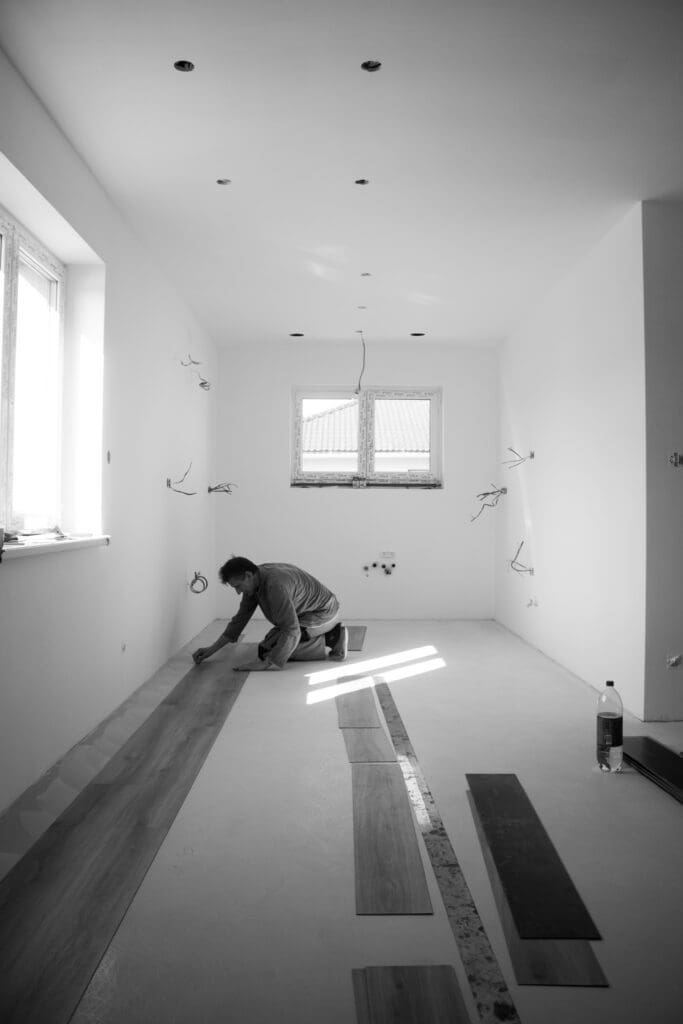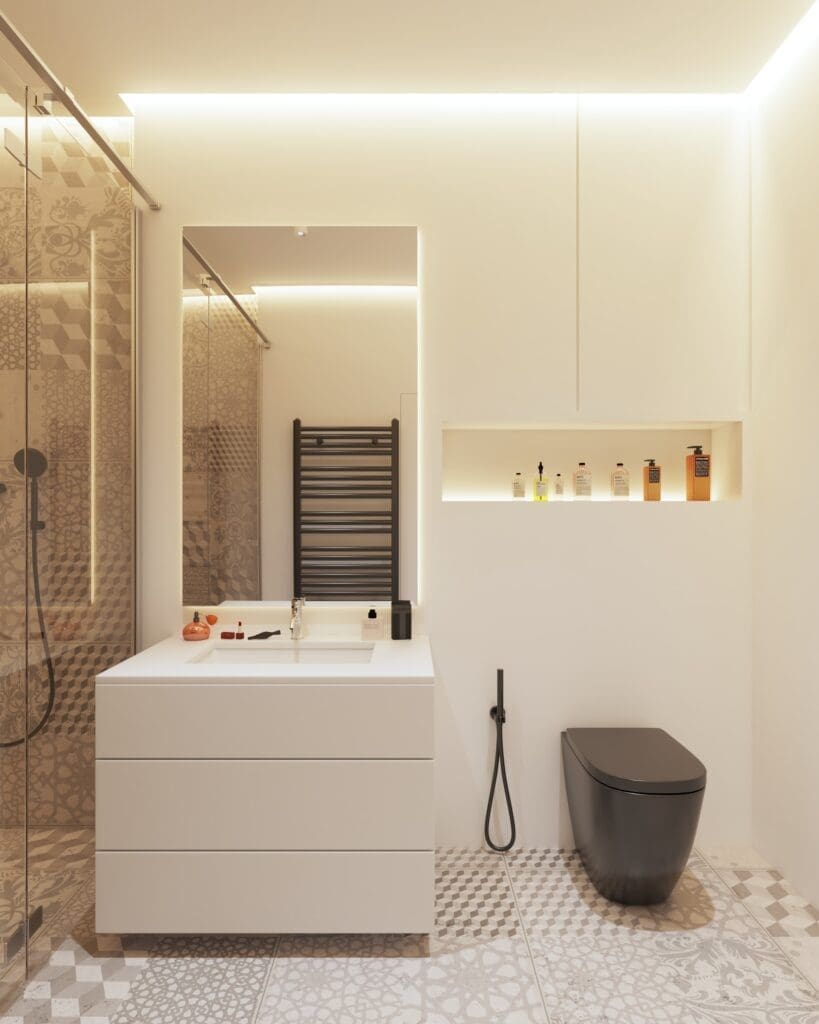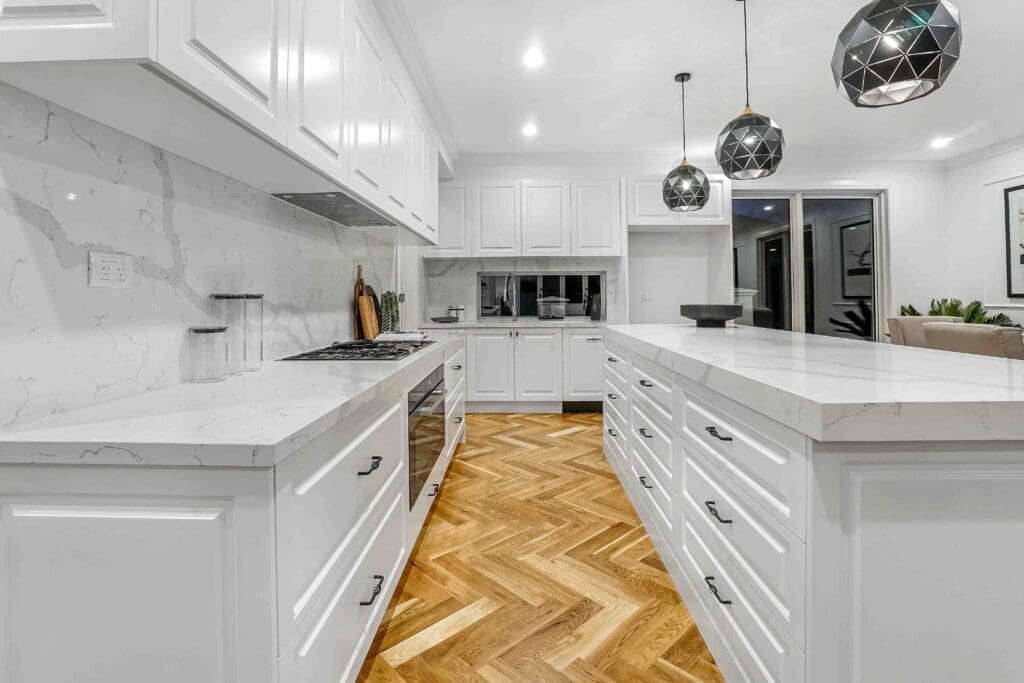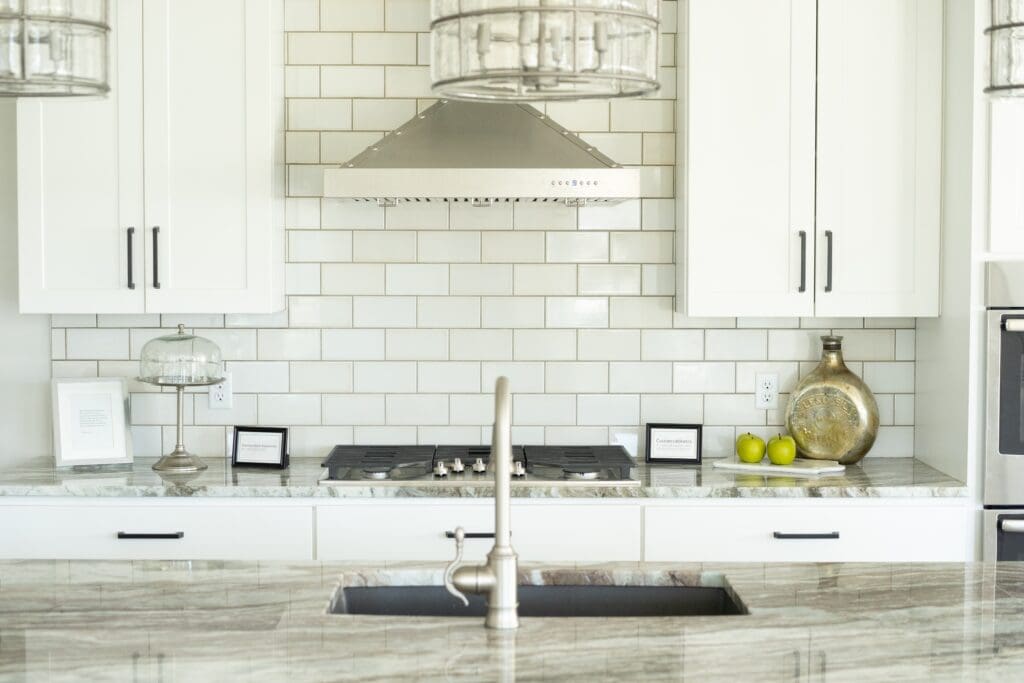Contractor Explains Common Home Remodeling Mistakes to Avoid
Author: Thomas Borcherding | Updated On:
Home Remodeling Requires Careful Execution
Home remodeling is a large investment, and you’ll want to make sure it stays that way as opposed to becoming a sunk cost. In this article, we draw upon decades of experience as professional remodelers in order to advise you on how to best proceed with your home remodeling projects.
1) Floating Vinyl Plank Flooring (LVP)
Vinyl flooring is an amazing material to use in homes where extreme luxury isn’t trying to be achieved. It is particularly useful in basements and wet areas where tile isn’t wanted.
What homeowners commonly do, however, is float their vinyl flooring. Floating means to lay flooring in a manner where it is not secured at all to the sub-flooring that lies beneath it.
While floating can save you in labor cost, we do not advise doing it. When floor is floated, it can easily shift, leaving less-than-ideal gaps between planks.
It can also cause these planks to not touch the sub-floor. When this occurs, every step that you take on non-level flooring will cause you to push down on your plank, causing you to experience your floor flexing under your weight until it hits the sub-floor. This is an unpleasant sensation, and you can hear it as well.
Instead, when installing vinyl plank flooring, you’ll want to adhere it to the sub-floor using an adhesive glue and/or a nail-down/staple-down method. Always consult the manufacturer’s installation guidelines, as these are very helpful and should be adhered to (like vinyl flooring to sub-floor).

2) Putting Supply Lines & Shower Niches in Exterior Walls
A mistake we see far too often is when people put plumbing supply lines (incoming water) inside of their exterior walls. While adherence to local building code depends on your municipality, it is universally frowned upon due to your exterior wall’s susceptibility to extreme temperatures, especially freezing ones. This can cause your supply lines to burst in the winter, a costly repair.
Further, the placement of shower niches in exterior walls requires the removal of insulation in order to make it fit. This reduces the energy efficiency of your home, and even creates a bridge between the outside temperatures and your home’s interior due to the shower niche’s depth.

3) Not Ventilating to the Exterior
It is quite common for home builders to exhaust bathroom fans into the attic, when they should be vented to the outside. Ideally, bathroom fans should have their own vent through the roof. This is not as daunting a task as it may seem, although if not done correctly it can lead to water damage.
We also commonly see bathroom fans’ ductwork being ran to exterior soffits (roof protrusion/overhang that goes past exterior walls). There may exist vents underneath these soffits. Ductwork that terminates here is a better alternative than venting straight into the attic.
The problem with venting high-moisture bathroom air into the attic is pretty straightforward. This humid air gets replaced slowly, creating the perfect environment for mold and mildew growth.
4) Succumbing to High-Pressure Sales Tactics & Not Doing Research
Here at Homestar, we forbid sales tactics. Unfortunately, most firms cannot say the same. A lot of firms within the remodeling industry can best be classified as sales organizations rather than remodeling firms.
Far too many times have homeowners shared with us that they gave in to a same-day contract signing due to being sold by a salesperson. Said salesperson would use tricks such as “pricing that is only good until end of day.” Is that truly the type of firm you wish to patronize? Further, is the person you’re speaking with a sales consultant or an actual designer?
Prior to committing to a contractor or installer, you should do thorough online research on them. Google their name plus the word “complaints.” Visit their BBB page and other review sites, and filter reviews by new. We recommend having a minimum of three firms out prior to making a decision.

5) Not Ordering Enough Materials
An additional 20% should be ordered for any material that relies upon precise cuts and installation, such as tile, flooring, siding, and roof shingles. Failure to do so can set your project back by weeks, as you wait for materials to arrive. If you are working with an installer, he or she will have to move on to other clients as well while waiting.
6) Expecting The Remodeling Process to Go Perfectly to Plan
Remodeling is an art, not a science. Nobody knows what truly lies behind your walls until demolition is complete.
There may have been a plumbing vent that now needs to be rerouted, or an electrician got lazy and ran wire through an unsuspecting wall that needs to come out. Materials sometimes arrive damaged or completely wrong, as well.
A good rule of thumb is to expect at least one thing to go wrong. With a dozen or more product vendors, imperfect-human labor, and general misfortune, remodeling can truly make you hate the process (and love the result).
7) Selecting The Lowest Bid
Selecting the lowest bid is not always the worst idea; more often than not, we are the lowest bid that our clients receive and our quality is higher than our competitors who charge higher prices.
However, this is not always the case. The probability of your remodel being of lessor quality when going with the lowest bid is higher than choosing the middle or high-end price.
Firms have to price themselves according to their demand and ability to meet this demand. If they find themselves receiving more volume than they can handle, then their prices will have to go up. This is typically a good sign in terms of quality.
8) Going With Trendy Materials
Trendy materials are popular for a reason. Most of the time it’s a good reason. When everybody jumps on the wagon and begins choosing the same materials is when a problem can occur.
Take for instance white subway tile. It is currently being requested by over 50% of our clients. In 10-20 years, or perhaps even 5, we personally predict that people will have grown tired of seeing subway tile everywhere.

9) Grouting Prior to Tile Inspection
Whether it be floor tile or wall tile, always inspect the tile installation quality prior to grouting. Check your tiles: are they installed correctly, do they wiggle or sound hollow underneath? Ensure they have dried properly before touching them.
It’s much more laborious to replace tiles when grout has already filled the grout lines.
It’s Getting Late, Let’s Conclude
We covered numerous technical installation tips as well as remodeling process advice. While things cannot always go perfectly, with enough time spent in the decision-making and design process, you can minimize the risk of your remodel going awry. We hope that this advice has helped, and we wish you the best of luck with your home remodeling projects.
About the Author

Thomas Borcherding is a professional kitchen & bath designer, and a member of the National Kitchen & Bath Association (NKBA). He is the second-generation owner of Homestar Design Remodel, and takes great joy in providing those in St. Louis with high-quality, affordable home remodeling.








